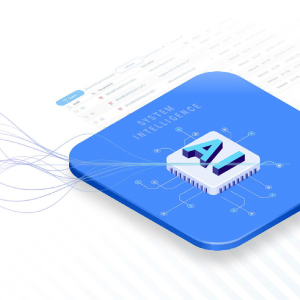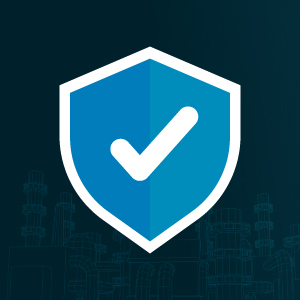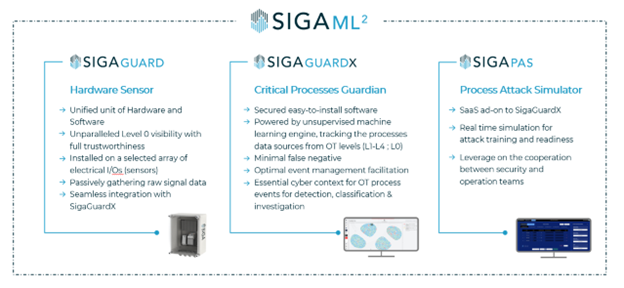Proven Results:
- 30% faster job placement (Washington, D.C.)
- 36% increase in engagement among underserved populations
- 65% increase in training module completions
- 71% increase in job applications submitted
- 30% faster reemployment for RESEA participants (Florida Department of Commerce)
State and Local Governments are rethinking the way they connect job candidates with meaningful employment. Eightfold.ai and Empyra have combined to join advanced AI-driven talent matching with configurable case management. Together, they deliver a unified, secure environment that helps agencies modernize operations, improve employment outcomes and provide more efficient, personalized experience for both job seekers and employers.
AI-Driven Workforce Modernization
Eightfold.ai was built by former Google and Facebook engineers to be the world’s most intelligent talent matching platform, matching candidates to the right jobs. From more than a decade of global labor market data, its neural network goes beyond keyword searches, interpreting:
- Skills
- Roles
- Qualifications
The platform continuously learns from interactions across job seekers, employers and case managers, moving agencies away from time-consuming resume screening toward a data-driven system that identifies talent by capability and aptitude.
Through its Career Navigator, Eightfold.ai provides:
- Visual career pathways
- Transferable skill identification
- Gap analysis
- Training from State-approved providers
This transforms the labor exchange into a dynamic environment that supports both immediate reemployment and long-term career mobility.
Integrated Case Management and Service Delivery
Empyra’s MyOneFlow consolidates workforce and social service delivery into a single, configurable platform. By capturing data once and reusing it across workflows, the system reduces duplication and frees staff to focus on engagement rather than paperwork. Designed as a Commercial Off-The-Shelf (COTS), Workforce Innovation and Opportunity Act (WIOA)-ready system, MyOneFlow includes Participant Individual Record Layout (PIRL) and performance reporting out of the box. As funding and requirements evolve, its flexible architecture allows agencies to tailor:
- Forms
- Eligibility rules
- Intake processes

The platform streamlines the participant journey by automating:
- Intake
- Enrollment
- Eligibility determination
- Business rules to identify program fit
- Referrals to partners for housing, education, training or employment resources
Participants can complete tasks and upload documents from any device via the mobile app. Beyond WIOA, MyOneFlow also supports:
- Apprenticeship management
- Temporary Assistance for Needy Families (TANF)
- Supplemental Nutrition Assistance Program (SNAP) tracking
- Domestic-violence programs
- Municipal grants.
By consolidating these functions, MyOneFlow gives agencies flexibility to manage multiple programs efficiently within one adaptive system.
“Better Together” Integration Between Eightfold.ai and Empyra
Together Eightfold.ai and MyOneFlow create a single front door for job seekers, case managers and employers. Unified identity management with Single Sign-On (SSO) and shared data models ensure information remains consistent across platforms.
Here’s how the integration works:
- Participants register in MyOneFlow
- Their intake data automatically populates into Eightfold.ai
- The AI engine generates skills assessments, job recommendations and career pathways
- Applications, training and other activities sync back into MyOneFlow
Case managers gain a real-time view of participant progress without manual entry, while employers benefit from accurate candidate matching and streamline recruiting tools. Behind the scenes, Eightfold.ai and Empyra operate a coordinated support model and incorporate agency feedback into joint product enhancements.
Trust, Security and Compliance
Both platforms meet rigorous standards, including:
- FedRAMP
- Tx-RAMP
- System and Organization Controls 2 (SOC 2)
- Department of Defense (DoD) Impact Level 4 (IL4)
- International Organization for Standardization (ISO) 27001
They also adhere to evolving regulations across the European Union Artificial Intelligence (EU AI) Act, Texas Department of Information Resources (DIR) and other State privacy laws.
MyOneFlow enforces:
- Role-based access controls
- Audit logging
- Deduplication safeguards
Building the Future of Workforce Modernization
Eightfold.ai and Empyra’s MyOneFlow demonstrate what is possible when AI, automation and integration align with mission-driven goals. The integrated solution helps agencies:
- Deliver faster services
- Improve job matching accuracy
- Reduce administrative burden
- Strengthen engagement
- Maximize limited resources
Workforce organizations can now create a more responsive, equitable and efficient system, empowering job seekers, supporting employers and advancing mission outcomes.
Watch the full webinar, “AI-Centric Innovation: Modernizing Workforce Agencies,” to see the full demonstration of Eightfold.ai and Empyra’s integrated approach to workforce transformation.
Carahsoft Technology Corp. is The Trusted Government IT Solutions Provider, supporting Public Sector organizations across Federal, State and Local Government agencies and Education and Healthcare markets. As the Master Government Aggregator for our vendor partners, including Eightfold.ai and Empyra, we deliver solutions for Geospatial, Cybersecurity, MultiCloud, DevSecOps, Artificial Intelligence, Customer Experience and Engagement, Open Source and more. Working with resellers, systems integrators and consultants, our sales and marketing teams provide industry leading IT products, services and training through hundreds of contract vehicles. Explore the Carahsoft Blog to learn more about the latest trends in Government technology markets and solutions, as well as Carahsoft’s ecosystem of partner thought-leaders.










